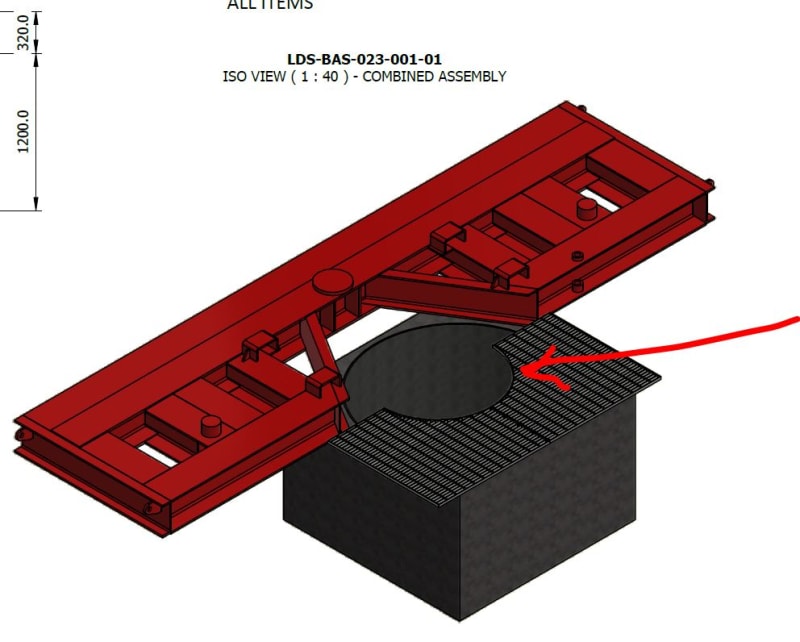Probably have been done to death here but after reading numerous threads and googling the hell out of it and consulting Roarks I am none the wiser so here I am.
I have a drilling client working out woop woop in Australia. (It's near 'Out to Buggery'.) They will dig a hole some 2.0m x 2.0m and drop a 1800mm diameter casing that is 1200mm deep with an 8mm wall into that hole. They will then backfill and compact against the casing on all sides. (Possibly using a high slump mass concrete mix which is neither here nor there.)
Here's the important bit. They will then place a drilling sub-base immediately adjacent the hole/casing. That sub-base when fully loaded with the drill rig in position will exert a surcharge loading to the soil under of 130kPa.
With a soil friction angle (Ka) of 0.33 I get a lateral pressure to the casing of 43.3kPa due to the surcharge.
Ignoring the soil conditions, whether it was compacted evenly around the circumference , whether the subbase is exerting a UDL is there a formula that you can calculate to work out either the required thickness of the wall required or the collapse load of the casing?
The Roarks formula I have seen here posted previously is for long thin walled tubes. The D/t ratio for this casing exceeds the parameters of the formula they use.
Do I just calculate the hoop stress or is it more involved?
Would someone be kind enough to help? Thanks in advance. (Red arrow points to casing. Floor grating over half of casing.)

I have a drilling client working out woop woop in Australia. (It's near 'Out to Buggery'.) They will dig a hole some 2.0m x 2.0m and drop a 1800mm diameter casing that is 1200mm deep with an 8mm wall into that hole. They will then backfill and compact against the casing on all sides. (Possibly using a high slump mass concrete mix which is neither here nor there.)
Here's the important bit. They will then place a drilling sub-base immediately adjacent the hole/casing. That sub-base when fully loaded with the drill rig in position will exert a surcharge loading to the soil under of 130kPa.
With a soil friction angle (Ka) of 0.33 I get a lateral pressure to the casing of 43.3kPa due to the surcharge.
Ignoring the soil conditions, whether it was compacted evenly around the circumference , whether the subbase is exerting a UDL is there a formula that you can calculate to work out either the required thickness of the wall required or the collapse load of the casing?
The Roarks formula I have seen here posted previously is for long thin walled tubes. The D/t ratio for this casing exceeds the parameters of the formula they use.
Do I just calculate the hoop stress or is it more involved?
Would someone be kind enough to help? Thanks in advance. (Red arrow points to casing. Floor grating over half of casing.)

